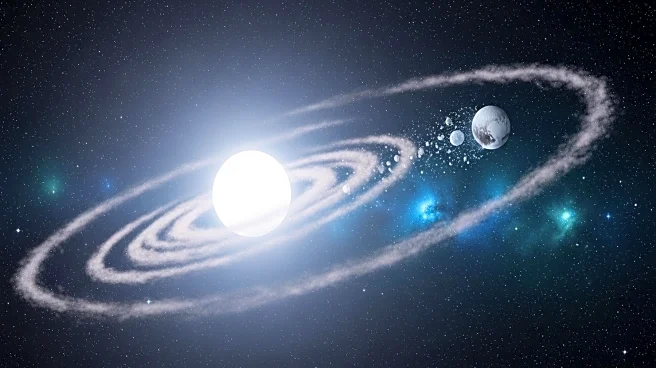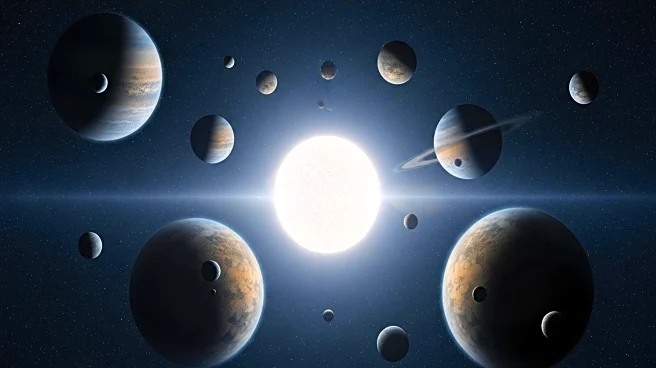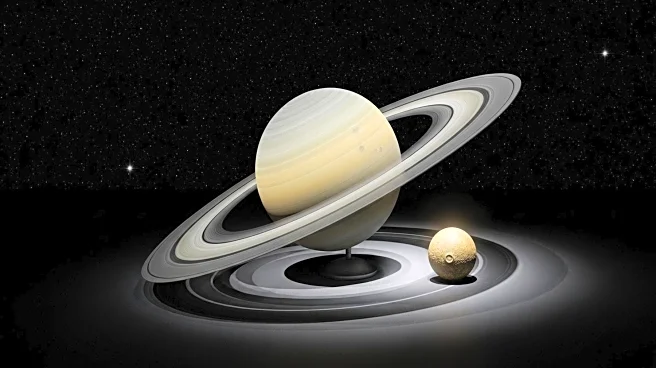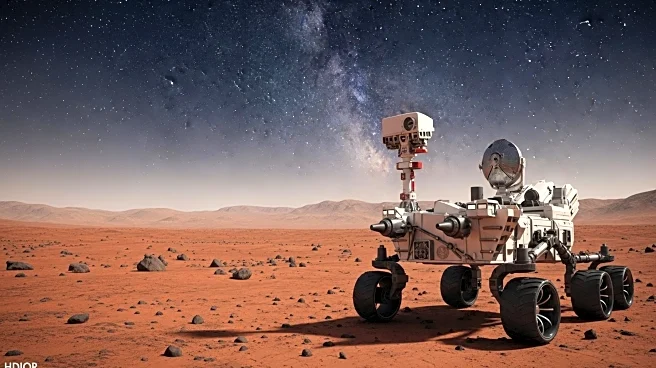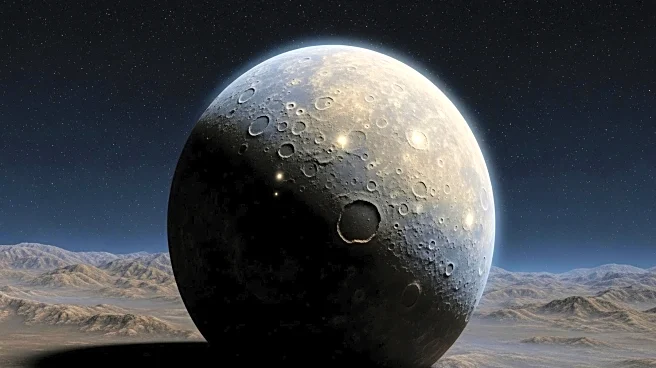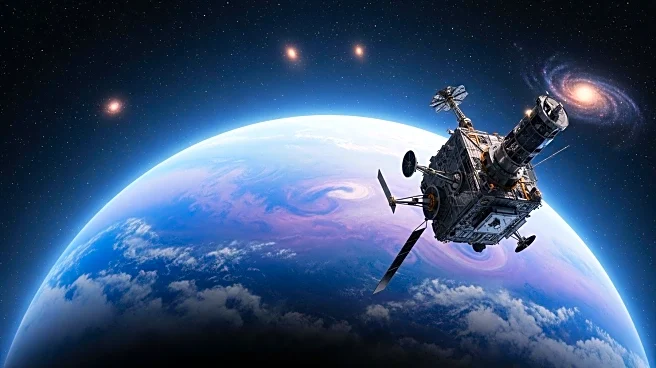What's Happening?
Researchers from ETH Zurich, in collaboration with the Max Planck Institute for Astronomy and the University of California, have published a study challenging the notion that sub-Neptune exoplanets like K2-18b are water-rich worlds. The study, led by Caroline Dorn, suggests that these planets have much less water than previously believed due to chemical interactions between their atmospheres and interiors. The research indicates that most water molecules are destroyed as hydrogen and oxygen bind to metallic compounds, disappearing into the planet's core. This finding contradicts earlier assumptions that such planets could harbor deep oceans beneath hydrogen-rich atmospheres.
Why It's Important?
The study's findings have significant implications for the search for extraterrestrial life. The reduced likelihood of water-rich exoplanets means that conditions conducive to life may be rarer than previously thought, potentially existing only on smaller planets. This challenges existing theories of planetary formation and the interpretation of exoplanetary atmospheres, impacting future research and exploration strategies. The results also suggest that Earth may not be as unique in its water content as previously believed, prompting a reevaluation of its role in the broader context of planetary science.
What's Next?
Future research will likely focus on refining models of planetary formation and atmosphere interactions to better understand the conditions necessary for life. Observatories more advanced than the James Webb Space Telescope may be required to detect smaller planets with potential life-supporting environments. The study encourages a shift in focus towards planets formed within the snow line, where water is chemically produced rather than accumulated from ice, altering the approach to identifying habitable worlds.
Beyond the Headlines
The study highlights the importance of chemical equilibrium between magma oceans and atmospheres in shaping planetary composition, challenging traditional links between ice-rich formation and water-rich atmospheres. This insight could lead to new theories in planetary science, influencing how scientists interpret data from current and future space telescopes.

